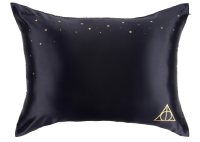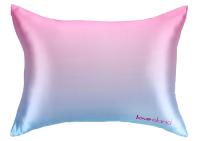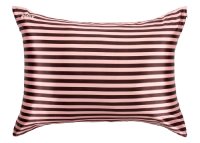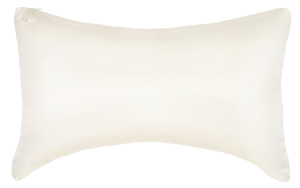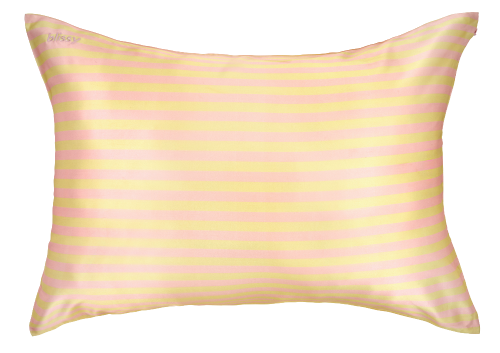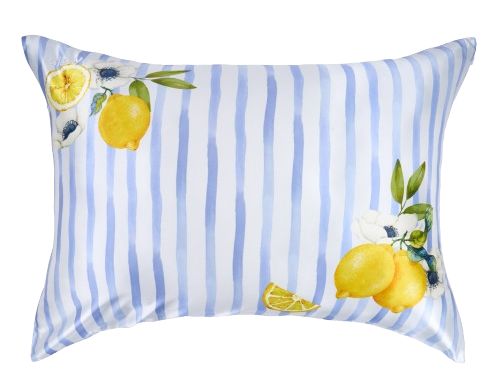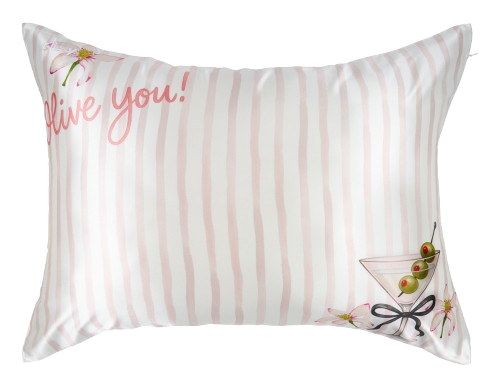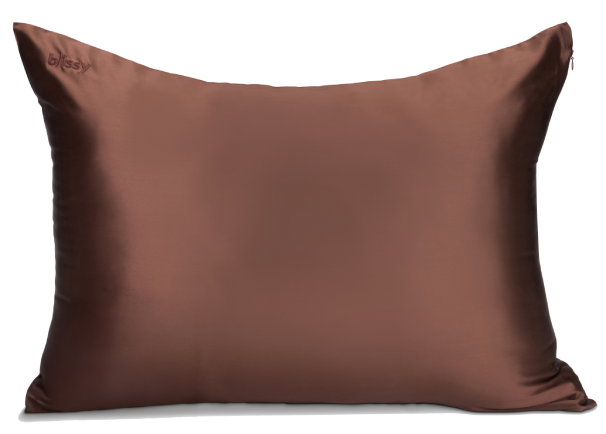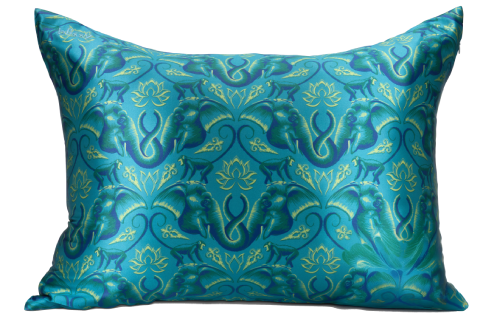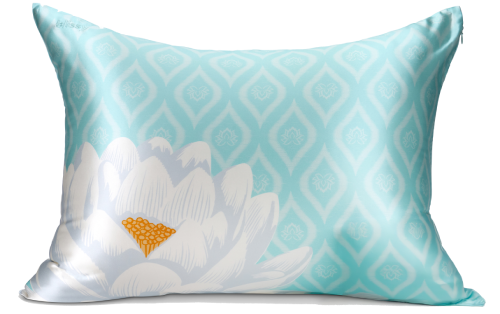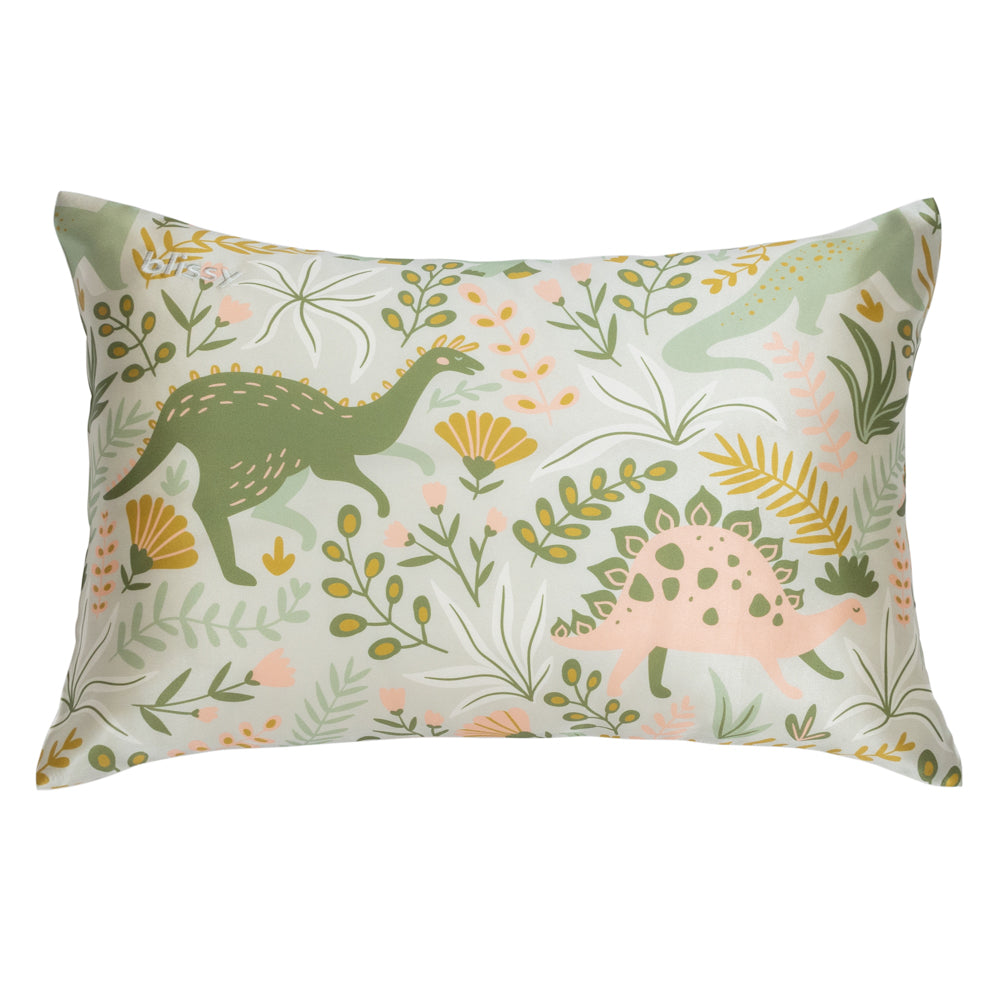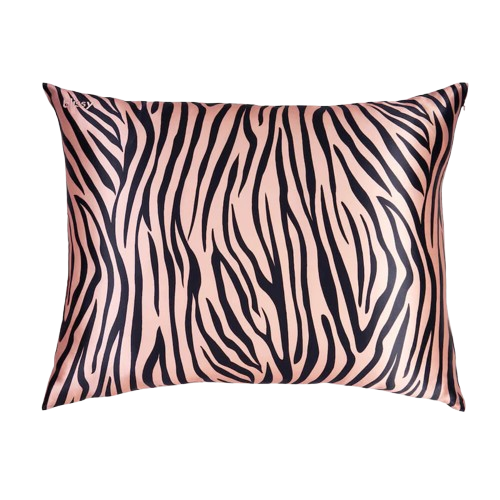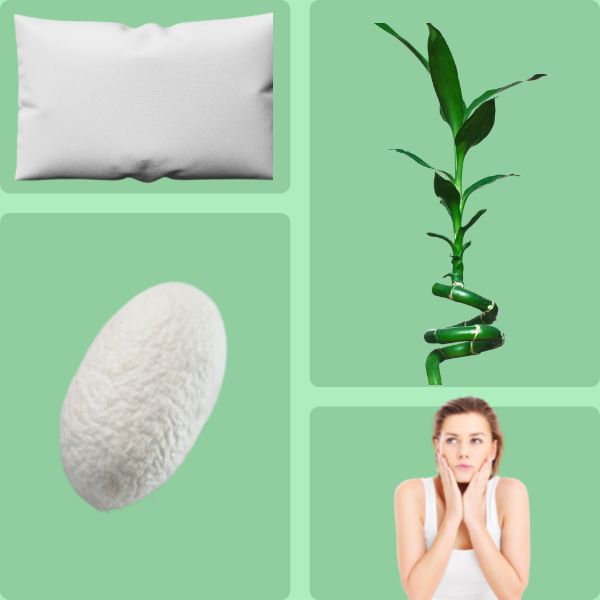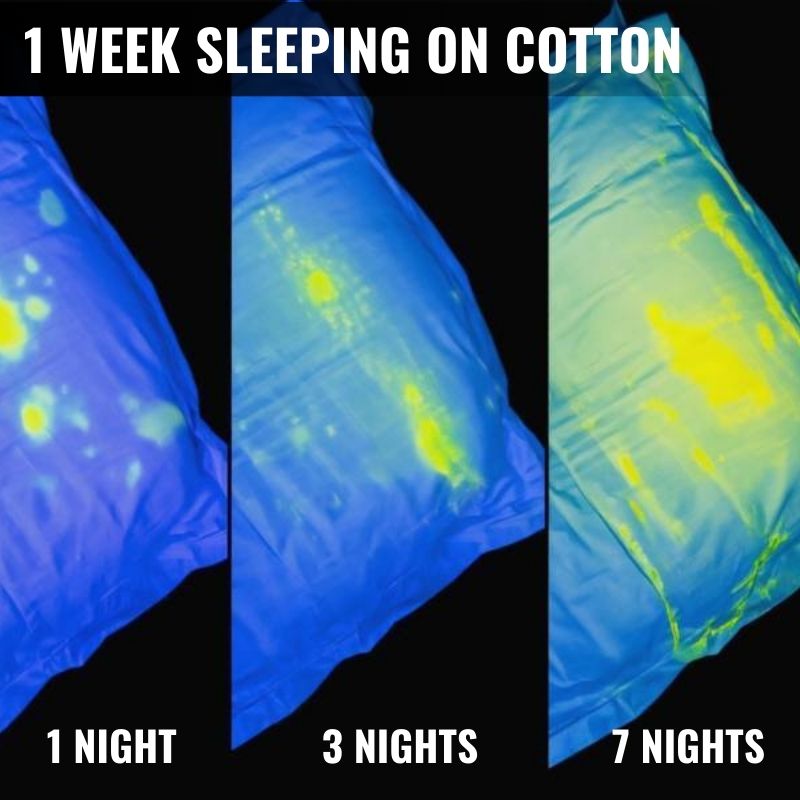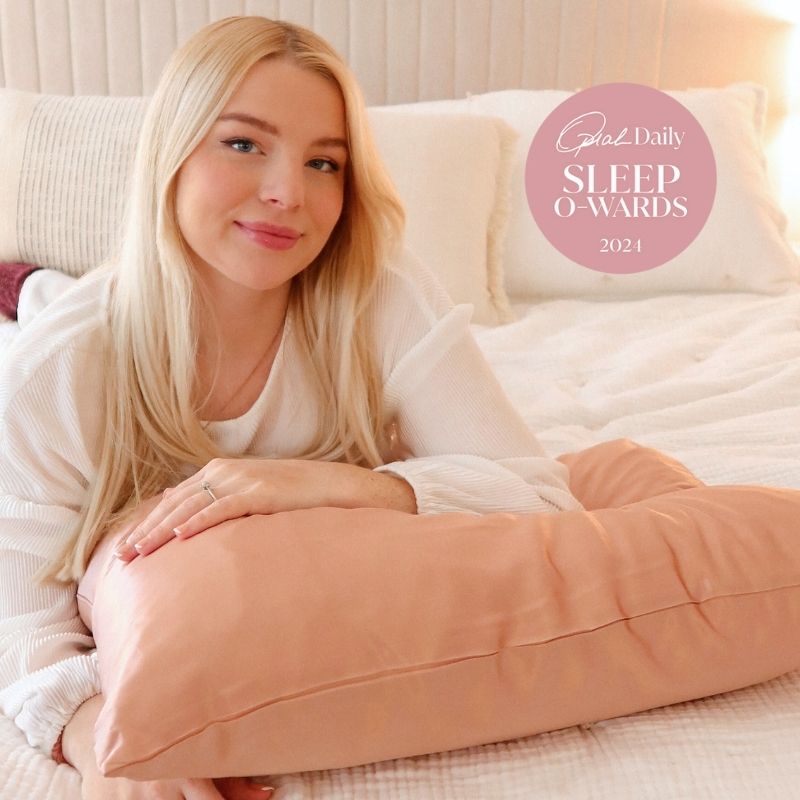In This Article:
Listen to an audio transcription of this post
When it comes to choosing between bamboo and silk for your hair, bamboo pillowcases are a good alternative to cotton. But when comparing bamboo and silk materials for your beauty sleep, silk is always the right pillowcase for your hair. Read on to learn why!
Silk vs Bamboo Pillowcase Qualities
Bamboo and silk, like cotton, are natural fibers. When compared to cotton, both bamboo and silk are softer to the touch.
Bamboo fabric comes from the bamboo plant (the same one pandas eat) and is crushed into a pulp to form thread. Bamboo fiber is more rounded than cotton, which is twisted and uneven.
Silk is a natural thread, starting as liquid and spun into cocoons by silkworms. Silk fiber is naturally spun thread that's long and fine.
Moisturizing Your Hair
To maintain silky, soft hair, keeping moisture in is key. Heat, whether from the environment or from the washing and drying of your hair, strips it of moisture.
READ MORE: Why Is My Hair So Dry: How to Moisturize Hair the Right Way
How to maintain moisture
Keeping that moisture in your hair is critical to its lustrous look and feel. That's why we all spend so much time and money adding conditioners and other products to our hair.

But there's no point in going to all that effort and expense if your investments are being absorbed into your pillow. Cotton is a highly absorbent fabric, but bamboo is even more absorbent than cotton. When you are sleeping on a bamboo pillowcase, your hair's natural oils as well as your hair products get absorbed into your pillowcase, robbing your hair of the vital moisture it needs overnight.
Because it is less absorbent than both cotton and bamboo, plus the tight charmeuse weave that is typically used in the making of silk pillowcases, moisture is held into your hair rather than sucked out of it when you sleep on a silk pillowcase. And you won't be losing the added conditioning products you have applied to your hair into your bamboo pillowcase.
Silk Pillowcases Prevent Friction on Hair
If you have frizzy hair, textured hair, relaxed hair, or just generally want to keep your hair soft, smooth, and shiny—preventing as much friction as you can on your hair will do wonders. You may have turned to a bamboo pillowcase as an alternative to cotton and found an improvement.
But for maximum frizz prevention, you must turn to silk. Bamboo is a softer choice than cotton, but nowhere near as soft as silk. With its tighter weave, silk will produce 43% less friction than cotton. Silk is the best fabric for alleviating frizz and smoothing hair while you sleep.

A Silk Pillowcase Will Prevent Tangles
If you are someone with longer hair or prone in any way to hair breakage or tangles, it is important to find a way to prevent this issue.
Because bamboo fibers are round, pillowcases made of them are soft. The fibers are more even and smooth when compared to cotton. But bamboo has nothing on silk when it comes to softness and smoothness.
With a silk pillowcase, your hair will glide on the surface of your pillow throughout the night. You'll wake up with a headful of lovelier hair that feels luxurious with almost no tangles. Starting your day with your hair less tangled means less brushing, fussing, and styling of your hair—which can lead to breakage and loss of volume.
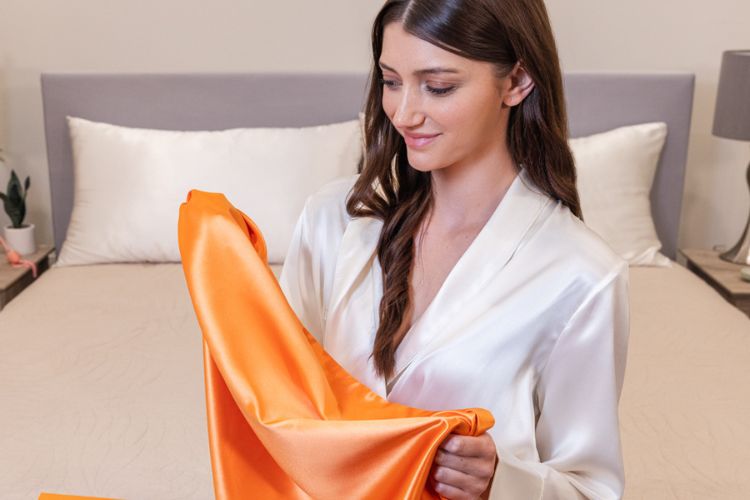
Silk Pillowcases Protect Hair Ends
Hair breakage will cause a rough look and feel to your hair. Regular trimming will help, but eliminating breakage also means eliminating lifeless looking hair (and saying hello to full, gorgeous hair).
Silk, which is made from filaments from the cocoons of silkworms, is the most natural protection from hair breakage in the night. The smoother fibers of long, fine silk will cause far less grating on your hair as you sleep.
Protect Your Hair While Staying Environmentally Conscious
Many conscious consumers these days prefer products that have the least negative environmental impact as feasible. Natural resources are often limited, and it is important to find a renewable resource when you can to be eco-friendly.
Here are a few environmental facts about cotton, silk, and bamboo bedding.
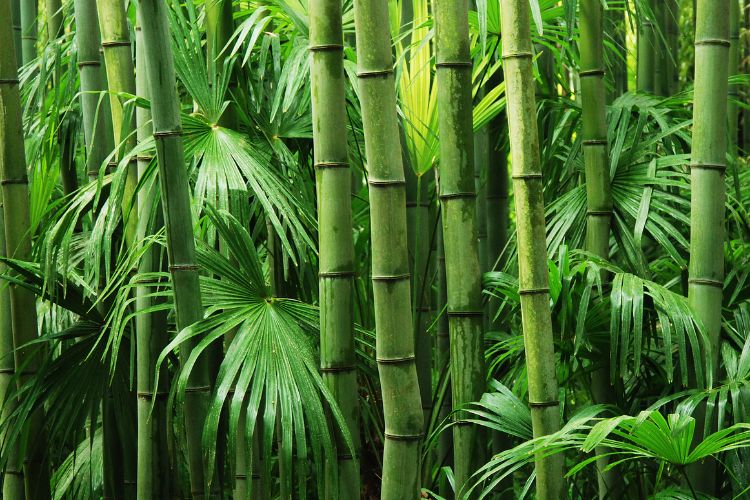
Bamboo sheets, silk sheets, bamboo pillowcases, and silk pillowcases all come from natural fibers, but it is good to be knowledgeable about the production and manufacturing process.
READ MORE: Eco-Friendly Fabrics: Why They're Important and What to Look For
Sustainability of cotton versus bamboo
The cotton plant needs more water and more resources to grow and process than bamboo. It grows solely in particular environments with just the correct amount of sunlight. It then goes through a machine that separates seeds and fibers and removes debris. Only then is it spun into yarn. This yarn is woven into fabric. After that, the product is subject to bleaching, dyeing and printing.
Alternatively, bamboo will grow just about anywhere. It reaches such heights that it needs a smaller area of land to grow. It is a more sustainable option than cotton.

Sustainability and toxins in bamboo versus silk
Bamboo and silk both come from natural resources. But to make bamboo into material for a pillowcase, the plants are sometimes cooked in harsh solvents such as sodium hydroxide. This turns the bamboo into either a rayon or viscose material that is spun into fibers. It is still considered a natural fiber, being processed from the bamboo plant.
A less toxic alternative to bamboo is silk. Silk pillowcases made from fibers from the cocoons of silkworms is not only a great way to keep healthy skin and hair but to keep a healthy environment. Female silkworms produce about 300 eggs at a time and the mulberry trees they feed on require little water. It is the most sustainable option.
The Silk Production Process for Silk Pillowcases

Bamboo Production Process for Bamboo Pillowcases
Generally, there are a couple of processes for making bamboo cloth: by machines and with chemicals. When crushed and processed with machines, bamboo stems are dissolved with natural enzymes. This creates a pile of mushy bamboo. Fibers that are still intact are combed out to make yarn.
Harmful chemicals that are known to cause health problems are used with this process of making bamboo fabric for bamboo pillowcases.
Bamboo fabric is sometimes made in an environmentally sustainable and ethical manner. Other times it may be harmful to workers or the environment. To ensure that you select the right type of bamboo fabric, it's important to learn more about the textile industry surrounding this plant.
Bamboo pillowcases made from bamboo pulp are also bleached. This process is a less than desirable method for the health of the earth and of your hair and skin.
Bamboo and Silk
Both bamboo and silk pillowcases can be machine washed in cold water on the delicate cycle. Bamboo fabrics and bamboo pillowcases are superior to cotton, but when it comes to bamboo versus silk, silk pillowcases and silk bedding are the superior option. Sleep in silk for a luxurious feeling. Your hair and skin will thank you!
A Silk Pillowcase Is Best for Sensitive Skin
Silk pillowcases are not only the best option for your hair, but also for your skin. Unlike silk, cotton can become a welcome environment for dust mites. This is a nasty little creature that, let's be blunt, you don't want on your skin or in your hair.
Because of the hospitable environment for dust mites, it also is the wrong choice for allergy sufferers. Cotton is more prone to trap heat, dry skin and has a rough surface. And if you have acne prone skin, the hypoallergenic properties of silk protect your skin as well.
What about satin?
Satin is not actually a material, but a type of weave. The bedding may seem silky upon first glance, but don't be fooled. Pillowcases marketed as "satin" are not made from natural fiber. They are synthetic—and you can immediately feel the difference.
Satin pillowcases are made of rayon, nylon, or polyester. These synthetic fabrics are much cheaper than many other fabrics because the raw materials are manufactured from cheap synthetic fibers. However, synthetic fiber is neither sustainable nor durable.
Silk pillowcases will last longer and are better for your hair, skin, and budget in the long run.
Takeaways


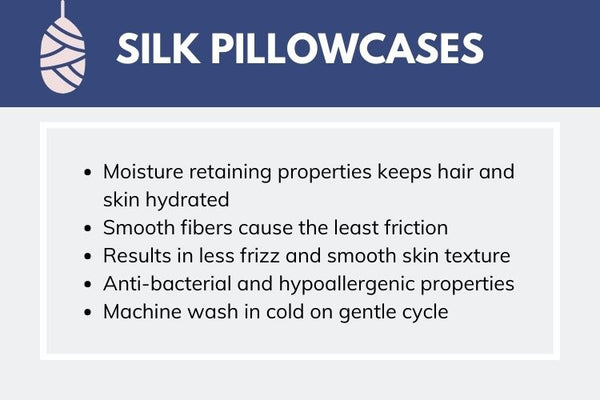
For Silky-Smooth Hair, Invest in Silk
Silk pillowcases win for healthy hair over bamboo pillowcases and cotton. The bamboo vs silk competition really isn't one. Silk pillowcases beat bamboo pillowcases for maintaining moisture in your hair.
The natural moisture retaining properties keep your hair's natural oils and moisture from being absorbed into the material.
Its tight weave provides less friction in the bamboo vs silk contest. For long hair, silk wins. For relaxed, processed, and frizzy hair, silk beats bamboo.
Bamboo pillowcases might be cheaper, but they come at the cost of the luxurious hair you deserve. Not to mention your skin! Invest in your hair. It is always there. Invest in yourself.



